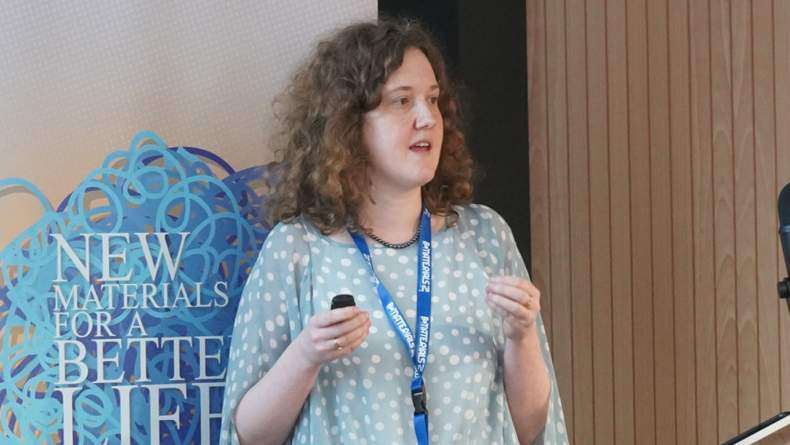BCMaterials Fortnightly Seminars #34

ESTIBALIZ LEGARRA
(BCMaterials)
INFLUENCE OF THE ORDER-DISORDER TRANSITION ON THE MAGNETIC PROPERTIES OF Fe75Al25-xSix ALLOYS
The influence of the different crystal structures and the variation of the lattice parameter on the evolution of the magnetism in the order-disorder transition produced by crushing and mechanical milling in the intermetallic Fe75Al25-xSix alloys has been systematically studied by means of XRD measurements, Mössbauer spectroscopy and magnetic measurements. X-ray and Mössbauer data show that mechanical deformation induces the disordered A2 structure in these alloys. The results indicate that with the addition of Si to binary Fe75Al25 alloy the mechanical deformation needed to disorder the alloys increases. At the same time the variation of the lattice parameter due to the disorder is reduced as Si is added indicating clearly that Si addition opposes the large volume increase found in FeAl alloys with deformation. The magnetic measurements indicate that there is a complex behaviour in ternary alloys with an opposite influence of Si and Al during the order-disorder transition. However, when the transition is fulfilled there is a linear relationship between structural and magnetic parameters.MARÍA SAN SEBASTIÁN
(BCMaterials)
POLYMER ELECTROLYTES
Ionically conducting solid materials display numerous advantages over their liquid counterparts, ranging from practical consideration, such as leakage, to structural factors, such as ease of miniaturization. Polymer ionics was a relative latecomer to the field of solid state ionics, but it was already made in 1973, thin-film polymers would have significant potential in all-solid-state electrochemical cells. The term “polymer electrolyte” can be applied to a broad family of ion-conducting materials: a system dissolving in a high-molecular weight polar polymer matrix, a gel electrolyte, formed by dissolving a salt in a polar liquid and adding an inactive polymeric material to obtain mechanical stability, a plasticized electrolyte, usually obtained by the addition of small amounts of a liquid of high dielectric constant to a solving polymer electrolyte in order to enhance its conductivity, an ionic rubber, compromising a low temperature molten salt with a high molecular weight polymer.
We are developing a hybrid electrolyte including a high conductive salt in a polymer matrix with an intimate contact of the different phases and physical attachment of the inorganic salt in the conductive organic polymer.
Related news
Proteínas artificiales para dispositivos energéticos rápidos, sostenibles y biocompatibles
Investigadoras e investigadores de los centros de investigación vascos CIC biomaGUNE, BCMaterials y CIC energiGUNE han conseguido modificar un tipo de proteínas para conferirles la capacidad para...Los materiales críticos protagonizan el workshop anual de BCMaterials
El próximo 19 de noviembre, BCMaterials celebrará una nueva edición de su workshop anual New Materials for a Better Life!. En esta ocasión los materiales críticos, los ambientes críticos donde los...Charla invitada con Karolina Milowska (6 de noviembre)
Nuestro programa de charlas científicas invitadas sumará una nueva cita el próximo 6 de noviembre, con la visita de la investigadora Ikerbasque Research Fellow en CIC nanoGUNE Karolina Milowska. La...‘BeZientzia’: 200 escolares se convierten en científicos/as por un día
Los días 28 y 29 de octubre tuvo lugar en Bilbao la feria científica ‘BeZientzia’, un evento en el que participaron cerca de 200 estudiantes de 6º de Primaria, procedentes de colegios de Bizkaia....



